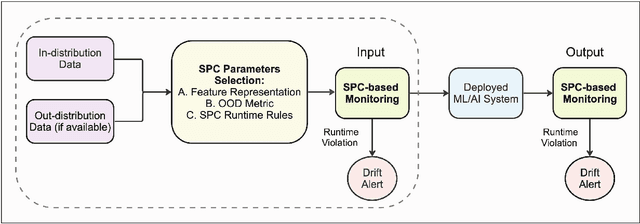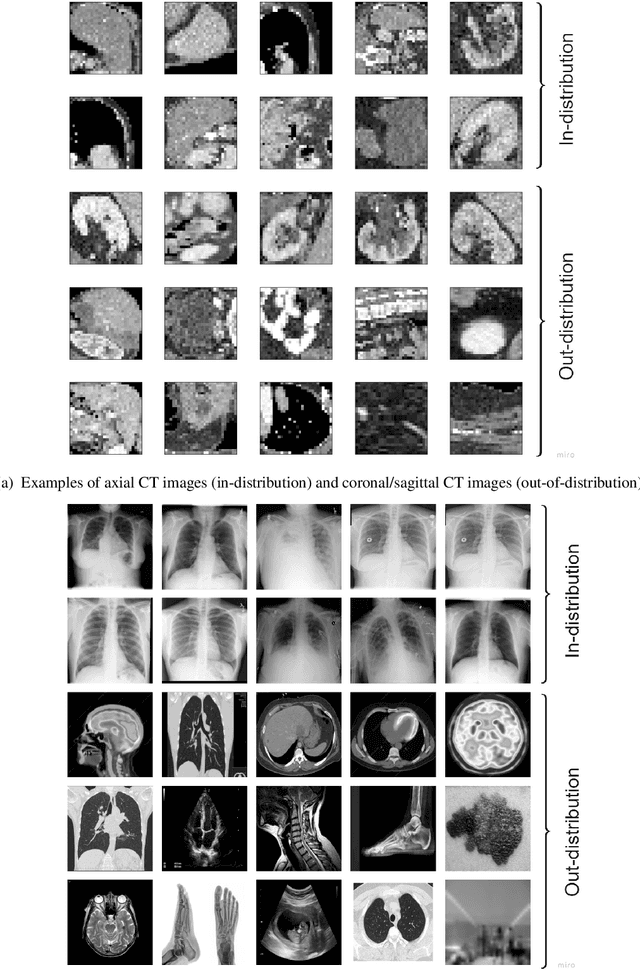Brandon Nelson
Out-of-Distribution Detection and Data Drift Monitoring using Statistical Process Control
Feb 12, 2024



Abstract:Background: Machine learning (ML) methods often fail with data that deviates from their training distribution. This is a significant concern for ML-enabled devices in clinical settings, where data drift may cause unexpected performance that jeopardizes patient safety. Method: We propose a ML-enabled Statistical Process Control (SPC) framework for out-of-distribution (OOD) detection and drift monitoring. SPC is advantageous as it visually and statistically highlights deviations from the expected distribution. To demonstrate the utility of the proposed framework for monitoring data drift in radiological images, we investigated different design choices, including methods for extracting feature representations, drift quantification, and SPC parameter selection. Results: We demonstrate the effectiveness of our framework for two tasks: 1) differentiating axial vs. non-axial computed tomography (CT) images and 2) separating chest x-ray (CXR) from other modalities. For both tasks, we achieved high accuracy in detecting OOD inputs, with 0.913 in CT and 0.995 in CXR, and sensitivity of 0.980 in CT and 0.984 in CXR. Our framework was also adept at monitoring data streams and identifying the time a drift occurred. In a simulation with 100 daily CXR cases, we detected a drift in OOD input percentage from 0-1% to 3-5% within two days, maintaining a low false-positive rate. Through additional experimental results, we demonstrate the framework's data-agnostic nature and independence from the underlying model's structure. Conclusion: We propose a framework for OOD detection and drift monitoring that is agnostic to data, modality, and model. The framework is customizable and can be adapted for specific applications.
 Add to Chrome
Add to Chrome Add to Firefox
Add to Firefox Add to Edge
Add to Edge